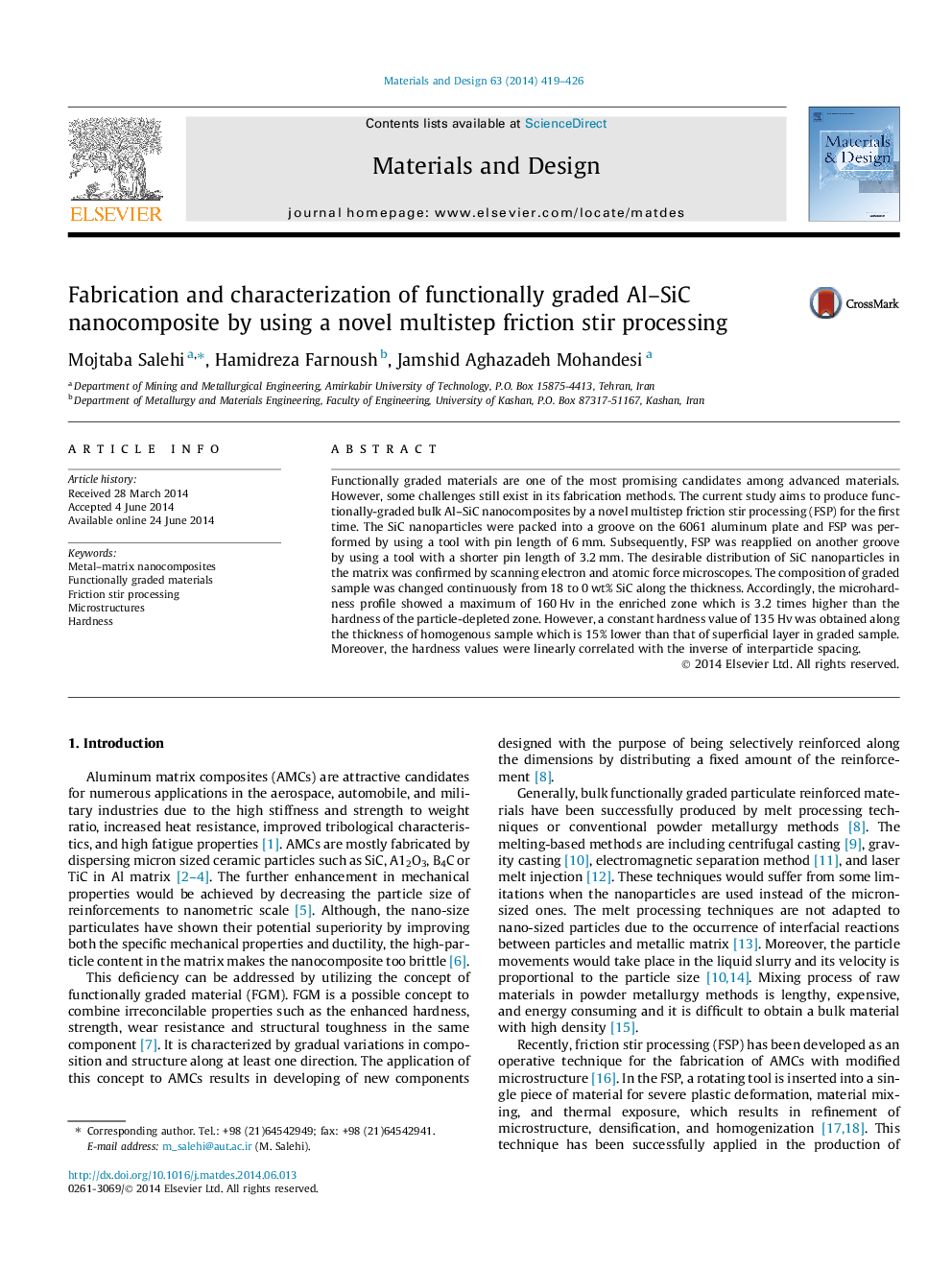| کد مقاله | کد نشریه | سال انتشار | مقاله انگلیسی | نسخه تمام متن |
|---|---|---|---|---|
| 829022 | 1470334 | 2014 | 8 صفحه PDF | دانلود رایگان |

• A novel multistep FSP to fabricate functionally-graded bulk nanocomposites.
• The composition of FG sample was changed from 18 to 0 wt% SiC along five layers.
• The 3.2 times higher hardness than the base metal in FG sample along the thickness.
• The 15% enhancement in hardness of FG sample with respect to homogenous sample.
• Microhardness and inverse of interparticle spacing was correlated linearly.
Functionally graded materials are one of the most promising candidates among advanced materials. However, some challenges still exist in its fabrication methods. The current study aims to produce functionally-graded bulk Al–SiC nanocomposites by a novel multistep friction stir processing (FSP) for the first time. The SiC nanoparticles were packed into a groove on the 6061 aluminum plate and FSP was performed by using a tool with pin length of 6 mm. Subsequently, FSP was reapplied on another groove by using a tool with a shorter pin length of 3.2 mm. The desirable distribution of SiC nanoparticles in the matrix was confirmed by scanning electron and atomic force microscopes. The composition of graded sample was changed continuously from 18 to 0 wt% SiC along the thickness. Accordingly, the microhardness profile showed a maximum of 160 Hv in the enriched zone which is 3.2 times higher than the hardness of the particle-depleted zone. However, a constant hardness value of 135 Hv was obtained along the thickness of homogenous sample which is 15% lower than that of superficial layer in graded sample. Moreover, the hardness values were linearly correlated with the inverse of interparticle spacing.
Figure optionsDownload as PowerPoint slide
Journal: Materials & Design - Volume 63, November 2014, Pages 419–426